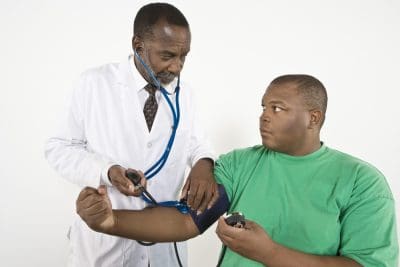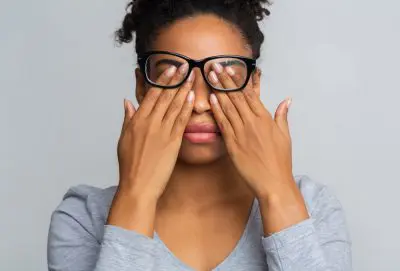Spinning vertigo episodes are more than just a brief sensation of dizziness; they are a profound and often distressing condition that can profoundly impact an individual’s quality of life. This sensation, where one feels as though they or their surroundings are in constant motion, spinning uncontrollably, can disrupt daily activities, causing significant distress and sometimes fear.
The causes of spinning vertigo are varied, ranging from inner ear disorders, such as benign paroxysmal positional vertigo (BPPV) and Meniere’s disease, to more complex neurological conditions. Despite the complexities and challenges it presents, the good news is that most cases of spinning vertigo can be effectively managed or treated.
With advancements in medical understanding and treatment options, individuals suffering from this condition have a hopeful outlook. This article aims to explore the underlying causes of spinning vertigo, shed light on the most effective treatments available, and offer insights into preventative measures that can help those affected by this disorienting condition find relief and regain stability in their lives. Our goal is to provide a comprehensive guide for navigating the challenges of spinning vertigo, offering valuable information and support to those seeking to understand and overcome this condition.
Understanding spinning vertigo
Spinning vertigo is often a symptom of an underlying condition rather than a standalone disorder. It’s crucial to identify the cause to tailor the treatment effectively. Common causes include benign paroxysmal positional vertigo (BPPV), Meniere’s disease, vestibular neuritis and labyrinthitis.
Diagnosis: The first step to treatment
The journey to treating spinning vertigo begins with a thorough diagnosis. Health care professionals may employ several diagnostic tools — including the Dix-Hallpike test for BPPV, hearing tests for Meniere’s disease, and MRI scans — to rule out other conditions. A precise diagnosis is crucial for effective treatment.
Treating spinning vertigo: A multifaceted approach
Repositioning maneuvers for BPPV
BPPV, the most common cause of spinning vertigo, is often treated with repositioning maneuvers like the Epley maneuver. These techniques aim to move the dislodged calcium crystals in the inner ear back to their proper position, providing relief in many cases.
Medications
Various medications can manage symptoms and treat underlying causes. These may include anti-nausea medications, antihistamines, and in some cases, diuretics for Meniere’s disease. It’s important to consult with a health care provider to determine the most suitable medication.
Vestibular rehabilitation therapy (VRT)
VRT is a specialized form of therapy designed to strengthen the vestibular system, improving balance and reducing the severity of vertigo episodes. Customized exercises are developed based on individual needs, making VRT a highly effective treatment option.
Dietary and lifestyle changes
For conditions like Meniere’s disease, dietary and lifestyle changes can significantly impact treatment success. Reducing salt intake, avoiding caffeine and alcohol and managing stress are recommended strategies to lessen vertigo episodes.
Surgery
In rare cases where conservative treatments fail, surgery might be considered. Procedures such as vestibular nerve section or labyrinthectomy are performed to reduce vertigo symptoms, although they are generally seen as a last resort.
Preventing spinning vertigo episodes
Prevention focuses on managing the underlying causes. Regular exercise, maintaining a balanced diet and avoiding triggers such as sudden head movements can help prevent episodes. Additionally, regular follow-ups with a health care provider are crucial to monitor the condition and adjust treatment as necessary.
Engaging and informative: Understanding is key
Spinning vertigo can be a challenging condition, but understanding its causes, treatments and prevention strategies can empower individuals to manage their symptoms effectively. With the right approach, most people with spinning vertigo can lead a normal, active life.
The journey through spinning vertigo episodes can indeed be daunting, yet it is one that many have navigated successfully with the right support and treatment strategies. The road to recovery and management of this condition is built on a foundation of accurate diagnosis, followed by a personalized treatment plan that may include repositioning maneuvers, targeted medications, vestibular rehabilitation therapy and thoughtful lifestyle modifications. Each of these approaches offers a beacon of hope for those caught in the unsettling whirl of vertigo, illuminating a path toward stability and improved quality of life.
Consultation with health care professionals is not just recommended; it is crucial. These experts can offer the insights and guidance necessary to tailor a treatment plan that addresses the unique aspects of each individual’s experience with vertigo. Their expertise becomes the cornerstone of a strategy designed to mitigate symptoms, enhance balance and restore normalcy.
This guide, aimed at demystifying the treatment landscape of spinning vertigo, serves as a reminder that though the condition may be complex, the possibility of relief and recovery is well within reach. With informed actions, supportive care and a commitment to following through with recommended treatments, individuals experiencing spinning vertigo can indeed find their footing again. Let this be a message of hope and a call to action for those navigating the dizzying challenges of vertigo: relief is possible, and a steadier horizon awaits.
This story was created using AI technology.











One Response
This article was full of information, I have vertical I get so dizzy can’t function, the gave med to help with the dizziness didn’t work, went to an physical therapists she had me lay down with my head hanging my head of the table then turn my head all the way to the right then to the left, I was spending so bad on both sides, thought I was going to pass out it help a lot, but still have a little dizziness